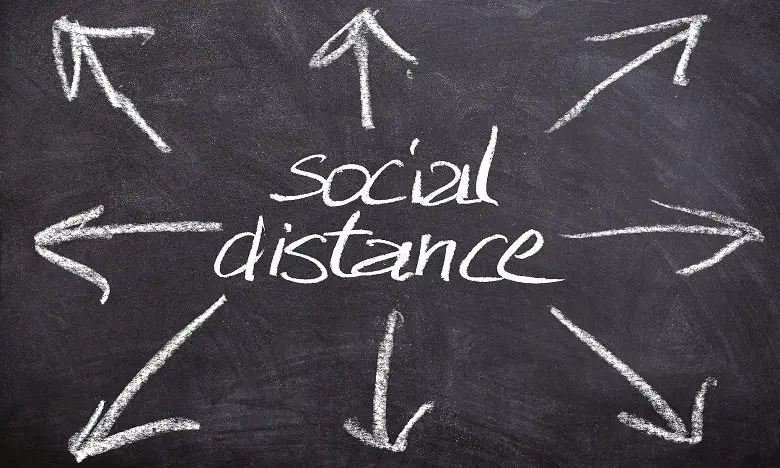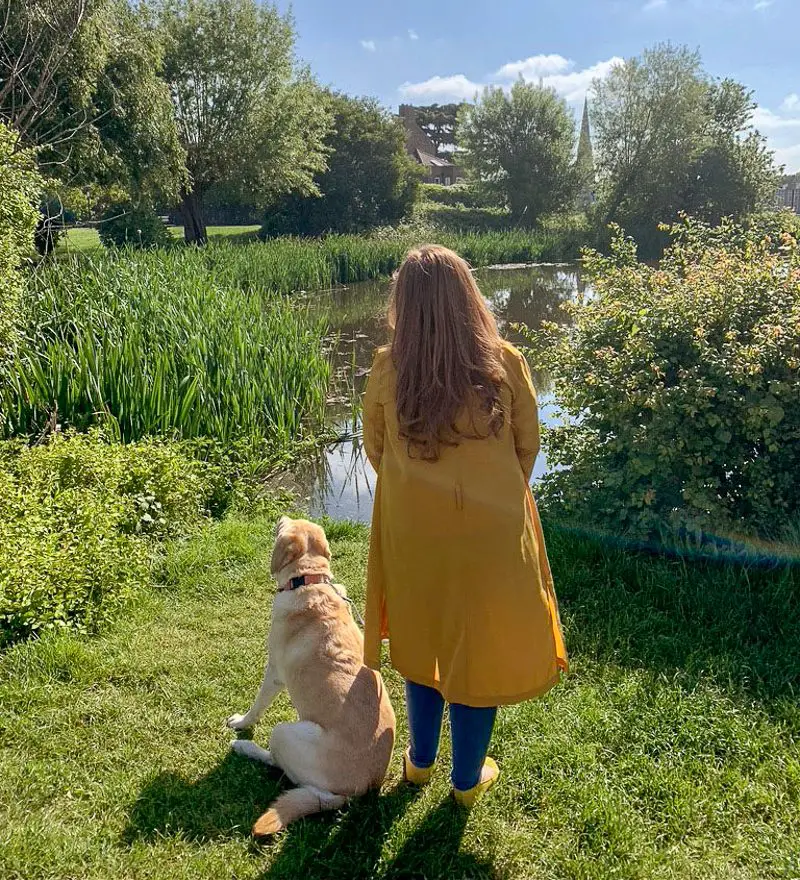
What is it like social distancing as a visually impaired person?
This is an important historical view of disabled people’s issues during the pandemic from our archives. The article delves into the unique challenges faced by visually impaired individuals in adhering to social distancing measures during the Covid-19 pandemic. It highlights the difficulties in navigating public spaces, interpreting visual cues, and maintaining independence amidst evolving health guidelines.
The Covid-19 pandemic, lockdown rules and shielding advice have affected everyone. But exactly how will vary greatly, particularly someone has a disability. Here, Emily Davidson, who is blind and runs the beauty blog Fashioneyesta, shares her post on what social distancing is like for people who are visually impaired.
Over the last few weeks, I have heard a lot of people from the sight loss community speak up about their thoughts and experiences on social distancing. So today I thought I’d weigh in on this subject myself.
I’ve been strictly self-isolating since March due to having a complex endocrine illness (Septo Optic Dysplasia/Pituitary Insufficiency). But, over the last couple of weeks, I have been going out for the first time.
Last week I took a trip to a nearby garden centre and made my first trip in more than three months to my local shopping centre with my mother.…. That was an experience, to say the least.
After spending an hour trying to negotiate floor markers, barrier systems at queues, avoiding the eager hands of people wanting to stroke my guide dog and hearing countless people tell me, “It’s over there!” I was mentally drained. Here’s why…

Worried about others getting to close when you’re out and about? Try our social distancing lanyard or colourful sash to remind others to keep their distance and help you to stay safe.
Social distancing for a blind person
Social distancing has become the new “norm” for all of us. But, for many, it probably doesn’t feel very normal at all. As someone who can’t see, social distancing only adds another layer of complexity into the mix.
I have been blind since birth, so I am used to having to navigate through different spaces and have become mentally robust over the years. I have learned to expect the unexpected and brace myself for new challenges every day. But, social distancing? Well, this is an entirely different ball game.
I am severely sight impaired (legally blind), and I have no sight in my right eye and only central vision in my left. I have no peripheral vision, meaning that I can only see what is directly in front of me.
I also have Nystagmus, so I find focusing on things, such as text and objects, difficult. I am unable to see far away objects that exceed the distance of six metres or anything that isn’t already in my direct line of sight.
What small amount of remaining eyesight I have is only enough to see colour, shapes and close up objects. So, you probably can decipher where my difficulties lie already.
I am very privileged to work with a wonderful guide dog, have living aids that enhance my mobility and live with sighted people who are able to drive and assist me. Yet, even for me, I still come up against challenges.
Social distancing, to an extent, requires looking. You need to look to read signs, see markers on the ground, check where you are, make sure you aren’t too near another person and see where you need to walk for queues and barriers.
Many of the measures that have been put in place for social distancing are not accessible, and when you can’t see, this makes being able to social distance very challenging.
Signs and notices
One of the biggest challenges I have faced is trying to see the numerous signs and notices displayed everywhere telling you about the social distancing rules and company guidelines.
There are signs telling you where you have to queue, how many people are permitted in lifts, how to pay, where to exit and so on – according to my sighted mother, that is.
Without audible announcements, these signs are not accessible by default to people with no or severely limited sight, even though many of them are brightly coloured and large to make them stand out.
Also, because there are so many of them, it becomes rather overwhelming. If I was out alone, I would almost assuredly need to rely on assistance from staff or other sighted people.
Floor Markers
For me, this is by far the most challenging aspect of social distancing. One of the key ways society has adapted to social distancing is through placing markers and arrows on the floor as guides.
There are markers at queues and till points to ensure you stand two metres apart. There are arrows in shops and businesses to ensure you negotiate the shop in a one-way circuit system. In short, everywhere you look there is sure to be a marker or arrow.
But, when you have a visual impairment, especially one that impacts your peripheral vision like mine, this is really complicated. There is a constant need to look down to see the floor markers. Even a number of sighted people have commented on how difficult the system is.
These markers aren’t accessible to those with visual impairments. They aren’t tactile or raised like stair edges or curbs are, so you can’t feel them with your feet. Not only that, but not all of them are distinctive in colour and shape.
Of course, as someone who works in retail, I can understand that businesses have had a lot of logistical things to consider. With time restrictions and immense pressure to reopen, I understand it can be hard for businesses to consider every single eventuality.
Bollards, queue systems and barriers
Another dilemma I have faced is trying to negotiate my way through barriers and one-way queuing systems.
Many shops are now operating one-way queue and using bollards and tape to section things off. My guide dog Unity’s valiant efforts to guide me through these obstacles has helped hugely.
However, even for us, it hasn’t been without difficulty and, at times, has been perplexing. Unity can guide me, but she needs instruction.
I first have to find the point where I have to queue, and often these barrier systems span far down the length of the shop or even outside it. It takes time and concentration to be able to find it.
It’s safe to say, I’ve found being able to shop totally independently without any assistance from sighted people pretty much impossible.

Seeing other people
Shopping isn’t the only issue I’ve faced – staying two metres away from people has also been tricky.
My eye condition makes it difficult to see far ahead or to either side of me. When out, I’m constantly aware that I might get too close to someone by accident. I’ve had to drastically slow down my walking speed.
I’ve now ordered a small bell to attach to Unity’s working collar to alert people of my presence in case they haven’t seen me.
So far, most people have been very conscious to give me the space I need. However, there have been the odd few who have shown less regard for social distancing.
I often worry that if they aren’t aware and I don’t see them, that I’ll bump into them and run the risk of catching or passing on the virus.
When out I’ve taken to wearing my Sunu band, an echolocation device that detects objects in your path and feeds back information to you with vibrations and haptic gestures. I’ve programmed it to alert me to objects at a two-metre distance.
Guide dogs and social distancing
Although guide dogs are wonderful and incredibly intelligent dogs, they can’t social distance. They haven’t been trained to socially distance or to know what a two-metre distance is.
Unity has been my rock and her help has given me more independence and confidence than I could have ever dreamed of. But she too has her limits.
I have also noticed that some people are still very eager to stroke my guide dog. Of course, guide dogs are not supposed to be petted, regardless of Covid-19 and social distancing rules, yet people still do it.
In this current climate, I find myself even more amazed at how people are okay with flouting social distancing rules to stroke my guide dog. I don’t see the logic in people’s thinking.
They may not be touching me, but they are touching my guide dog that I am in constant close contact with. They are also coming well within the two-metre distance to do so and compromising theirs and my own health in the process.
My final thoughts on social distancing as a blind person
Businesses and establishments have been under immense pressure from all sides. They have needed to think of quick ways to enable them to open and kick start the economy again while still adhering to government guidelines.
So, things aren’t going to be perfect. There will be glitches in the beginning. There are so many things for businesses to consider and, unfortunately, the needs of visually impaired and other disabled shoppers have been forgotten.
But it’s important that we disabled people, as a community alongside our non-disabled supporters, work together to advise and encourage society to think of effective ways to help disabled people live this new way of life.
I didn’t write this blog to cause alarm or upset. I believe that, in time, we will learn to adapt to this situation and adopt habits to adjust. I also believe that, with encouragement, society will learn to adapt social distancing measures to accommodate people living with sight loss.
But, I wanted to write this blog to make people from the sight loss community aware of some of the challenges they may face when getting back out into society. Because I think it’s important to be both physically and mentally prepared for it.
It’s going to be challenging and at times it might seem strange. But you aren’t alone in this, there are plenty of people who can relate to how you are feeling.
My advice to you….
- Stay safe, remain aware and seek help from those around you if you can.
- Talk about the issues you face with social distancing when out and continue to advocate for more accessible solutions for social distancing measures. We may be living in these new circumstances for some time yet, so it’s important we raise awareness of the inaccessibility we are facing in this new way of living.
- Don’t forget to take care of your physical health, but also your mental health too.
We may have to distance physically, but we can still come together in other ways as a community and be closer than ever.
Stay safe!
By Emily Davidson
Find out more about Emily and read all her posts by visiting her blog Fashioneyesta.
Buy our social distancing lanyard or colourful sash to remind others to keep their distance and help you to stay safe.
More on Disability Horizons…
Ongoing Challenges for Visually Impaired Individuals in Public Spaces
- Navigation Difficulties: Visually impaired people often rely on touch and close contact for navigation, making social distancing protocols particularly challenging.
- Access to Information: Critical updates are frequently disseminated visually, leaving those with vision impairments at a disadvantage.
- Public Perception: Misunderstandings about the abilities and needs of visually impaired individuals can lead to social isolation and stigmatization.
For more insights on the impact of social distancing on the visually impaired, visit the World Economic Forum.
- 8 misconceptions about visual impairment and blindness busted
- Blind photographer Roesie on being confident to achieve your dreams
- 58% of disabled and chronically ill people feel anxious about the easing of lockdown rules
Originally posted on 21/07/2020 @ 7:15 pm